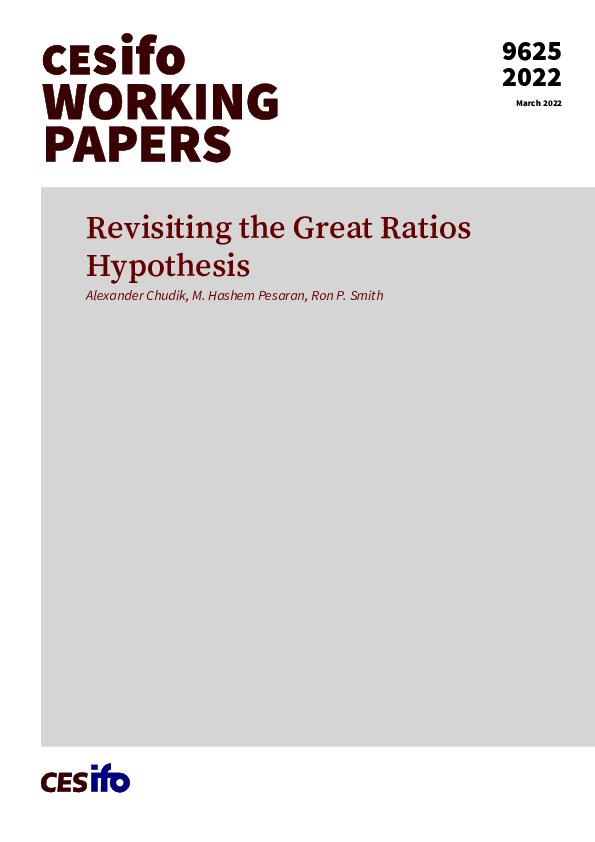Revisiting the Great Ratios Hypothesis
CESifo, Munich, 2022
CESifo Working Paper No. 9625

The idea that certain economic variables are roughly constant in the long-run is an old one. Kaldor described them as stylized facts, whereas Klein and Kosobud labelled them great ratios. While such ratios are widely adopted in theoretical models in economics as conditions for balanced growth, arbitrage or solvency, the empirical literature has tended to find little evidence for them. We argue that this outcome could be due to episodic failure of cointegration, possible two-way causality between the variables in the ratios, and cross-country error dependence due to latent factors. We propose a new system pooled mean group estimator (SPMG) to deal with these features. Using this new panel estimator and a dataset spanning almost one and half centuries and seventeen countries, we find support for five out of the seven great ratios that we consider. Extensive Monte Carlo experiments also show that the SPMG estimator with bootstrapped confidence intervals stands out as the only estimator with satisfactory small sample properties.
Fiscal Policy, Macroeconomics and Growth
Empirical and Theoretical Methods